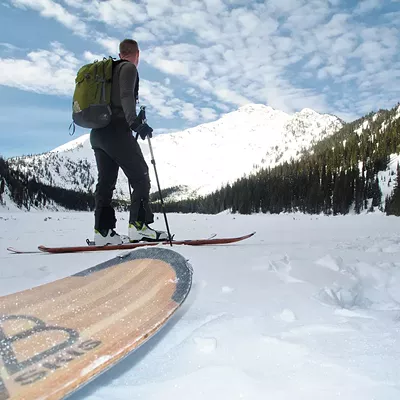Winter is far from over, but the lack of snow in town makes it difficult to imagine that our mountain landscapes contain lethal potential. The region’s typically heavy, spring snowfall can quickly transform into destructive slides as it did last year, claiming three lives in the Cascades. Thankfully, organizations like the Idaho Panhandle Avalanche Center (IPAC) are working to limit the threat of avalanches for those treading in the backcountry.
The center started with just a hotline in the mid ’80s, but it now monitors the Idaho Panhandle National Forests — 2.7 million acres in all — including the Cabinet, Selkirk, St. Joe, Purcell, Coeur d’Alene and Bitterroot mountain ranges. The center also tracks sensor readings from all over Idaho, registering everything from snow-water equivalents to soil moisture.
Director Kevin Davis’ main focus is on avalanche safety classes. The classes are free and include practice locating and digging up avalanche beacons that are hidden under the snow. “We want to simulate the stress of finding people fast,” Davis says. “You can only last 10 minutes under the snow. The goal is to awaken people as to just how difficult it is to pull off an avalanche rescue.”
A segment of the class is dedicated to digging a proper snow pit for analysis and how to interpret this information. This education plays an instrumental part in IPAC’s ability to provide real-time avalanche observations. The center’s website functions as a hub for volunteers to upload their observations. “The more eyes we have in the mountains, the better the product we’ll be able to put out for everyone involved,” Davis says.
In the hopes of fostering more support, the IPAC is raffling off a weekend getaway to the Caribou Mountain Lodge just north of Sandpoint. To enter, all you need to do is upload field data from the North Idaho backcountry. Visit idahopanhandleavalanche.org.
















